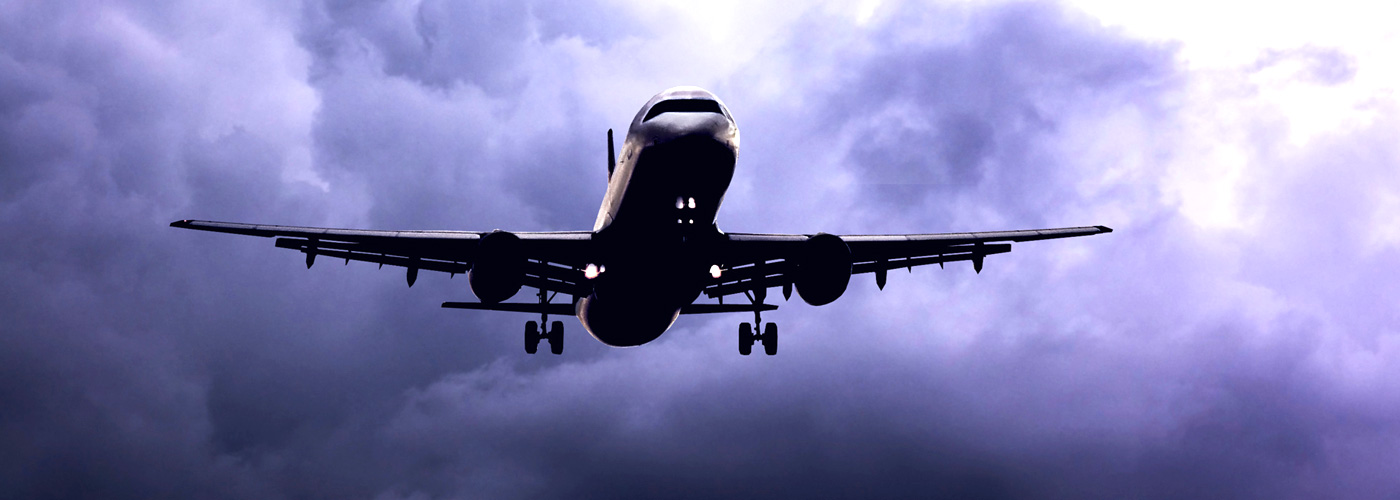How Airports Keep Passengers Safe in Stormy Weather

The next time your flight is delayed due to weather, try to muster up some patience. Air travel during stormy weather can be a challenging experience for both travelers and airport management. Just ask anyone in the northeast who had travel plans during the recent snowstorms. Travelers are eager to get to their destinations, and airport personnel work hard to get them there safely.
Since no one can control the weather, it’s important to know how airports follow strict protocol to maintain the safety of all passengers.
Before the Storm
Navigating through a storm begins with monitoring the impending weather so that airport management can begin the process of securing the area. Some of the measures that may be taken include:
Securing Equipment
To avoid equipment from being damaged in a storm, personnel will secure and relocate equipment such as tugs and pullies (the equipment that pulls and pushes an aircraft) to an area close to the terminal or gate area.
Evacuating Aircraft
To protect the airplanes, dispatchers will assign planes to be evacuated to different hubs or airport gating areas in various parts of the country where the storm is not expected to hit.
During the Storm
Travelers should expect flight delays and cancellations during inclement weather. One might suspect it’s the inability for the airplane to navigate in the less than ideal weather, but knowing the intense protocol airports enforce to keep passengers safe may encourage more patience. Here is a snapshot of what happens:
Increased Personnel in the Air Traffic Control Tower
During an active storm, there is intense communication to ensure everyone’s safety. It’s important to have extra personnel in the control tower to make sure everything is being communicated effectively and that all inquiries are being answered in real-time.
De-icing
Depending on the size of the aircraft, de-icing can take anywhere between 15 to 30 minutes. De-icing is only performed on departing planes and planes scheduled for a turnaround flight. Clearing alley and taxi ways is also part of the de-icing process. Here is how it’s done:
- Trucks remove snow from alley ways, taxi ways and gate areas and bring it to a steamer where it is melted immediately. Maintenance crews are always on call to repair any steamer that is malfunctioning to prevent snow from piling up.
- Planes are de-iced on the alley way prior to departing. Four de-icing machines work to remove all the standing snow that has accumulated on the aircraft. Once all the snow has been removed, a special liquid is then put on the plane to prevent additional snow from sticking to it.
- Arriving aircraft that are not scheduled for a turnaround flight do not get de-iced and are sent to a hangar.
Working Together
Maintaining air traffic is critical for smooth and safe airport operations, so it’s important that all airport personnel do their part. These are the steps that are put into place to get a plane off the ground:
- Fueling the Plane
- “Catering” the Plane―Replenishing the plane with refreshments, etc.
- Instilling Customer Service―Boarding passengers safely onto the plane and loading luggage and cargo.
- Attending to the Pilot’s Needs―Pilots may request maintenance checks or personal items.
- Disconnecting the Jet Bridge―Ensuring the bridge is disconnected prior to take off.
Thoughts from a Vaughn Alumnus
“Understanding airport management and protocols is the key to a successful career,” said Patrick Batey ’16, a graduate of Vaughn College’s airport management program. Batey credits Vaughn with being instrumental in preparing him for his career in aviation. “Everything I learned at Vaughn, I have used as stepping stones to get me where I am today. I love the aviation industry and Vaughn was there every step of the way to help me live my dream.”

